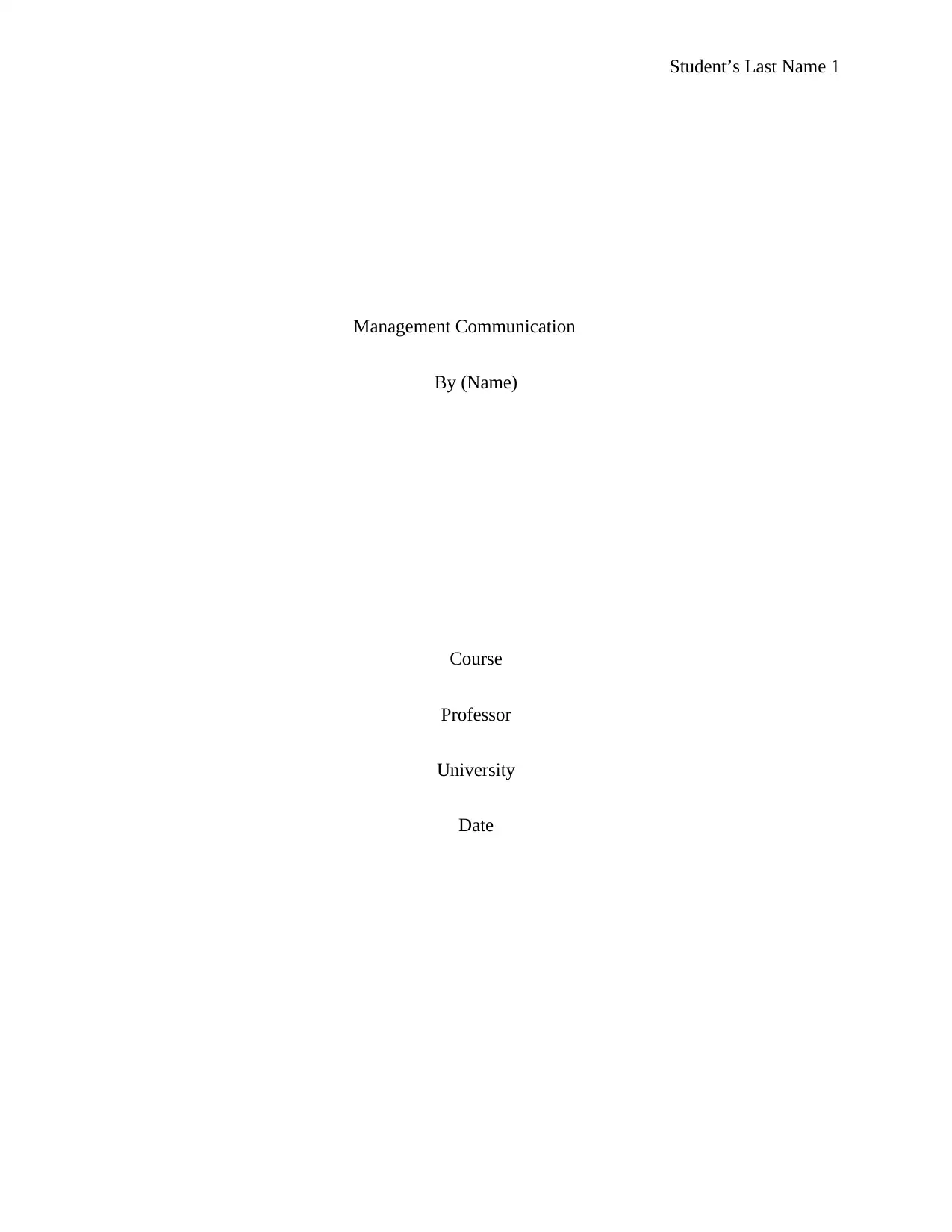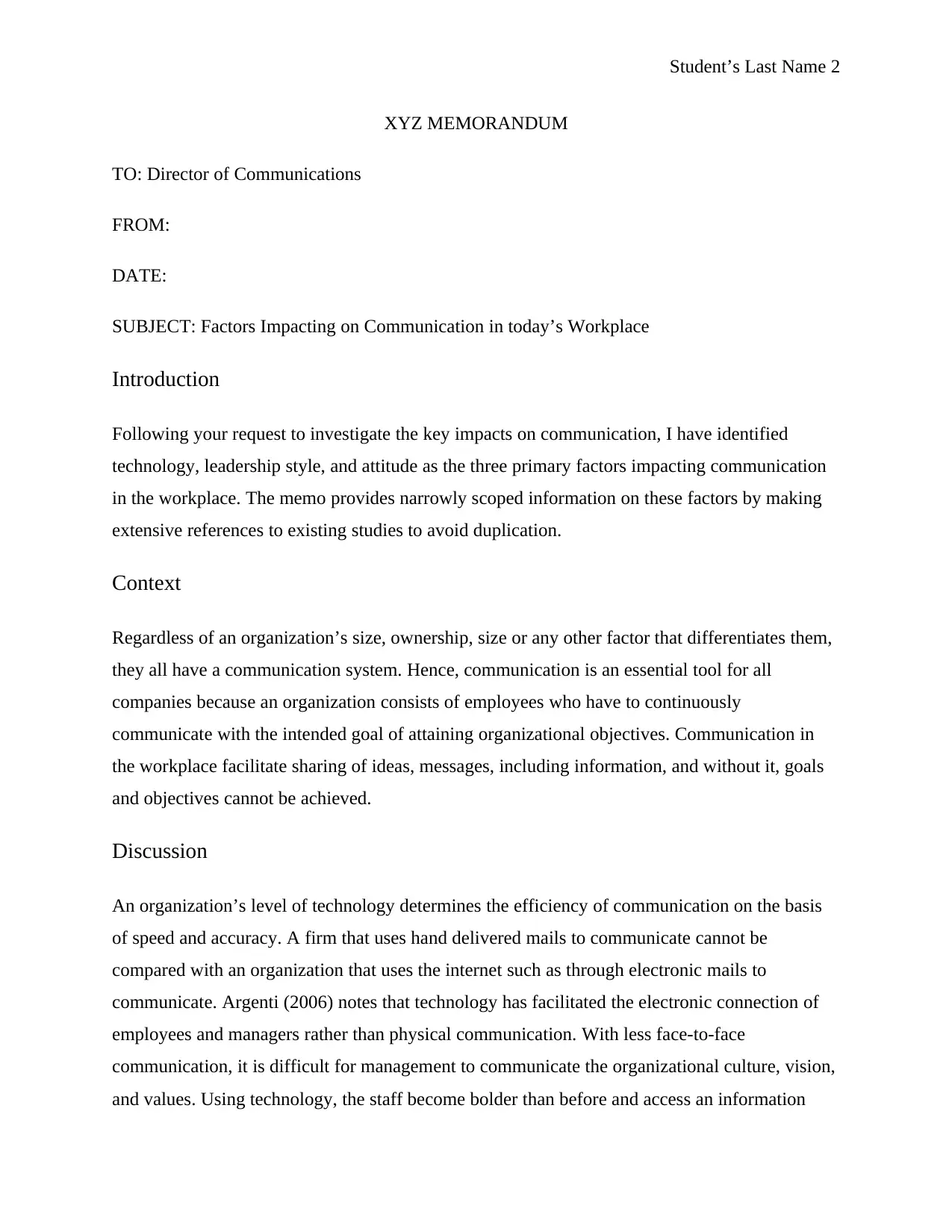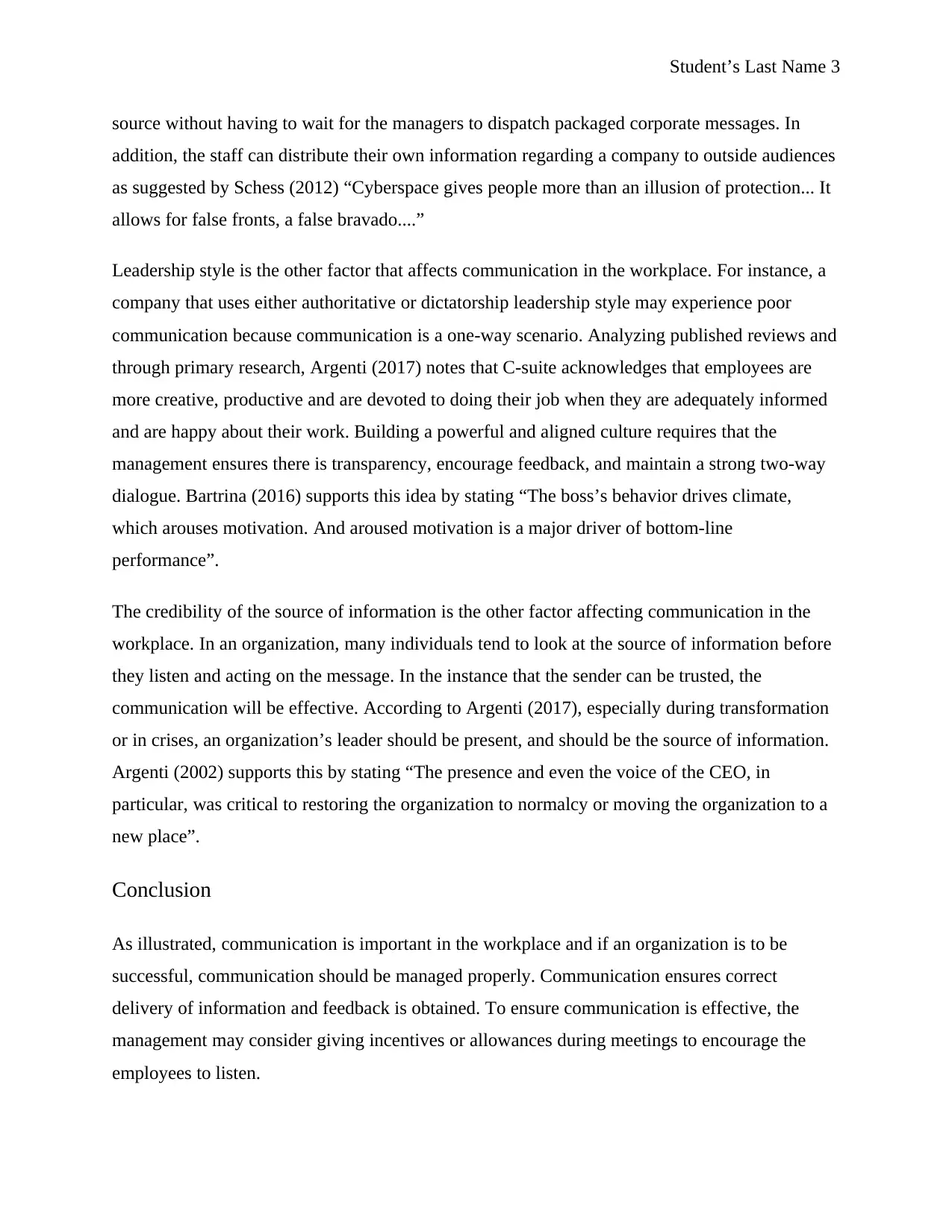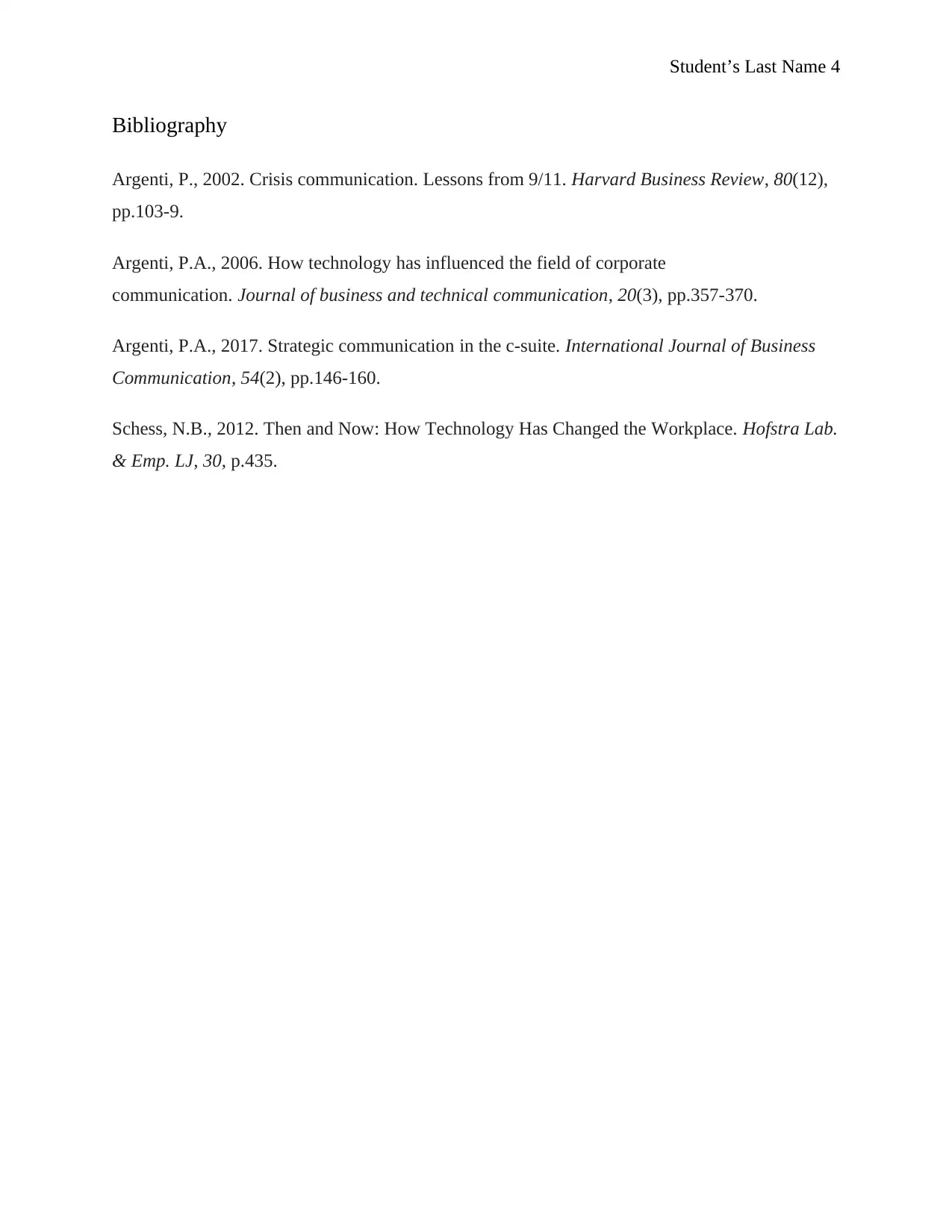Management Report: Key Factors Impacting Workplace Communication
VerifiedAdded on 2023/04/08
|4
|644
|178
Report
AI Summary
This report investigates the key factors impacting communication in the modern workplace, identifying technology, leadership style, and the credibility of information sources as primary influences. It highlights how technology facilitates electronic connection but can hinder the communication of organizational culture and values. Different leadership styles, particularly authoritative approaches, can impede effective communication, while transparency and feedback foster a more communicative environment. The report emphasizes the importance of a credible information source, especially during organizational changes or crises, suggesting that leaders should be present and communicative. Ultimately, the report concludes that effective communication management, including incentives for employee engagement, is crucial for organizational success, ensuring accurate information delivery and feedback.
1 out of 4









![[object Object]](/_next/static/media/star-bottom.7253800d.svg)